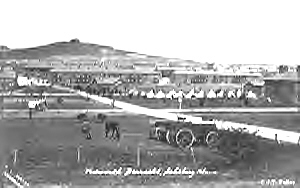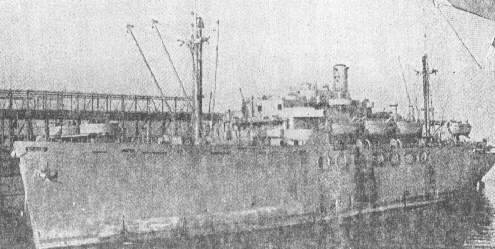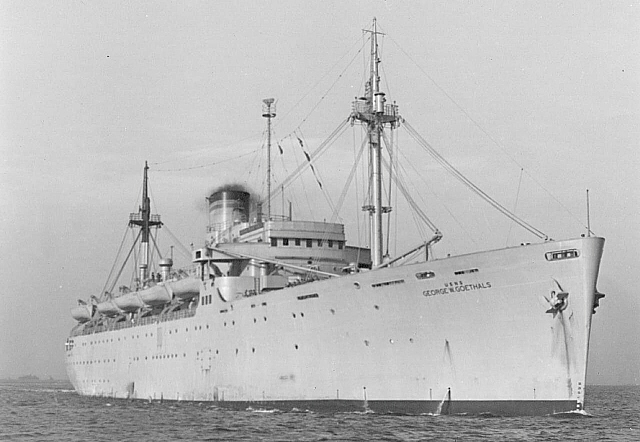
"A view of Tidworth Barracks, circa 1912. Today, most of the buildings still remain. The hill in the background has now been planted with pine trees. Horses are still used here too for ceremonial and recreational purposes." Source: T.F. Fuller
Robert O'Neil and Marianne Fisher were married 11 August 1945. It must have been soon after the wedding that Robert was transferred with his postal unit to France. We loose track of Marianne after she adopted me in November, but it seems we eventually ended up at Tidworth Camp, Hampshire. The ghosts of Borley hadn't bothered Marianne, but the psychical researchers, the reporters, and her unique life style were haunting her. She needed a new life.
Using the Internet once again, I tried to fill in some of the blanks between Ipswich and America.
Details are sketchy, and I am trying to find as much information as possible to verify and flesh out the following:
I was born in Ipswich October 9, 1945. After adopting me in November of 1945, my new mother changed my name from Peter Richard to Robert Vincent O'Neil after my new father. Robert O'Neil was born in Caledonia, Minnesota, and was serving in the US Army BTRY A, 101 FA BN as a mail clerk. He was posted at Parham Air Base when he met my mother. They were seperated when his unit went to France, leaving my new mother and myself to emigrate to his home in America.
At the time, my new mother may have used any or all of her name(s): Marianne Emily Rebecca Shaw Greenwood Foyster Fisher O'Neil. A service prayer book from that time period gives the following information:
Some time in late 1945 or early 1946, we ended up in Tidworth, Hampshire at the Transient Camp for War Brides, awaiting emigration to the United States. While their, I contracted "Camp Fever" and may have been treated by some German POWs. I also have scars on both knees, so some operation may have taken place at this time. Are medical records still available, since Tidworth is still active?
We arrived in New York August 6, 1946 aboard the US George Washington Gothals.
My father used to tell the story how my mother's home was taken over for the war, and how tanks would train there. Obviously this didn't happen at Borley, but I wonder if Mom wasn't telling him about Tidworth.
I wonder if their are any records of our stay at Tidworth, and is there a picture of the camp available from that time period? I am not looking for my birth mother - I found her (Kate Helen Emma H------) and one of my brothers a few years ago.
Thank you for any help you can offer.
While waiting for answers to my inquiries, I found the following on the Internet.

Attached to this web page was the following "fan" mail.
We really enjoyed the pictures [on this web site]. My husband lived in Tidworth all his life so knows
Amesbury well. We came to New Zealand 7 years ago - it was good to see pictures from "home".
Mavis & Pip Colgan
Upon contacting the Colgans, they wrote:
The most important Transit Camp that I can remember in Tidworth during that
period was an American G I Brides Transit Camp that was used after the
American Troops had left - it was situated in Delhi Barracks which was a
Military Hospital.
Tidworth Barracks was occupied by American Forces from late 1942 until the
end of the War in 1945.
Delhi Barracks was always used as a Military Hospital since they were built
around 1912, and this use continued until the American Forces left for home
after the War. As the need for centralising the large number of GI Brides
to be transported to the US, a small number of American medical and
administrative staff remained at the Hospital, which was retained by the
American authorities for this purpose.
The GI Brides were subjected to stringent medical examinations and
documentation (for which I understand, from comments made at the time, very
humiliating for some of the Brides).
Your Mother told you that you were cared for by German POW's, this was quite
possible, because these POW's who were in US Army custody were used for many
purposes - i.e camp cleaning, cook house duties and general duties as
required, so it could well be that at that time you received the care that
your Mother mentioned.
Unfortunately, the name of the ship which took you to the US (George Washington Gothals) I am
not familiar with. It may have sailed from Liverpool in the North of England
but the vast majority of brides were taken to Southampton and embarked for
New York (Ellis Island) on the Queen Mary where I understand they were kept
until they rejoined their husbands.
At that time, I was in the latter stages of my apprenticeship as a Carpenter
and we were called to the Hospital from time to time for maintenance
repairs, so really I had a first hand knowledge of the Transit Camp
(hospital).
Thank you so much for sending your file - we found it very interesting. You have obviously been
very busy getting the information together. Well done. I can recall that not all the ladies were
housed at Delhi Hospital. A good number were accommodated at a near by wooden hutted war
time camp called Matthew Barracks - situated to the East of Tidworth - it was eventually
demolished and a British Army married quarters site built. A good number of the "brides"
obtained private accommodation, indeed I remember two of these ladies stayed with my Mother
and myself for a brief period. Unfortunately, I have no recollection of their names, except the fact
that they came from the North Country area - perhaps Lancashire. Although all this may have no
bearing on your Mothers activities during this period, perhaps it will add to the big picture of
those days. With reference to your Mother's Service Prayer Book: "WSAFIC" this may read as
"WAAFS" - Womens Auxiliary Air Force Service. It also appears that Rendlesham Hall may be
located in East Anglia UK. Have you been into Rendlesham Hall on the Internet? [Can not link.] Also the
Maureen and Jim Tansey web site. It
shows Rendlesham Hall as a war time US Airforce Base with a hospital. Lots of info' on the
geocities site.
Regards Mavis & Pip
I also found the following on the Internet:
In the early 1940s several large Emergency Medical Service (EMS) hospitals were built on green-
field sites and handed over to the allied forces on completion. One of the best preserved of these,
now Wymondham College in Norfolk, became the 77th USA Air Force Station Hospital upon its
completion in 1943. The wards occupied standard corrugated iron Nissen huts, while the staff
accommodation on the periphery of the site was mainly of asbestos and brick. Temporary EMS
hospitals from the 1940s still form an integral element of many civilian hospitals today.
After 1945, the services retained their permanent, brick-built hospitals, but since the late 1980s
many have fallen victim to cuts in defence spending. Some, such as the Delhi Hospital, Tidworth,
were briefly reprieved during the Gulf War, but now medical services are being concentrated in
fewer establishments. From English
Military Hospitals: An Architectural History By Kathryn
Morrison
It was while conducting this search that Maureen Shaw - daughter of Ian - wrote to tell me, "Is it possible that Marianne sailed from Liverpool. I know that I am going back more years than I like to remember. When she came to visit at Magheramore she used the Liverpool, Belfast crossing. Plus I remember that she left behind your pram. I played with it for years. As it was a time of rationing, surely she would not have parted with it if she was going to Tidworth camp. She would have required it there more than she did at Magheramorne. Maybe she left there to go directly to join the ship for America."
Tidworth or Liverpool? Whatever the circumstances, we left England in time to reach New York harbour by August 5 or 6, 1946. We sailed on the George Washington Goethals.

